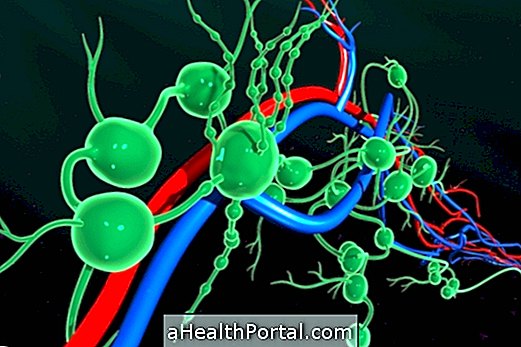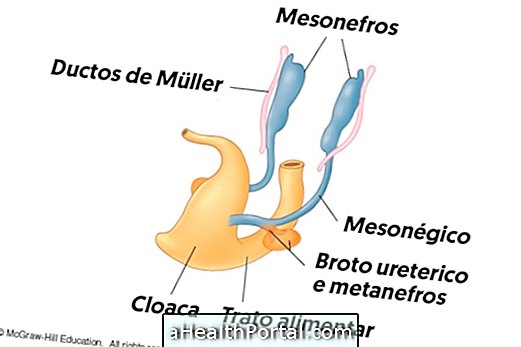The cerebral aneurysm is a permanent dilation in a blood vessel that carries blood to the brain. When a cerebral aneurysm ruptures, it always causes a bleeding that is more or less severe according to the size and amount of blood leaking into the skull.
The most common symptom of a brain aneurysm is headache that can come on suddenly or that will increase over time. The feeling that the head is warm and that there is a 'leak' and that it seems that the blood has spread also happens in some people.
Although genetic factors are involved in the causes of an aneurysm, uncontrolled high blood pressure greatly increases the risk of developing an aneurysm in the brain.

Main symptoms
Usually the aneurysm does not cause any symptoms, being accidentally identified in a diagnostic examination to the head, such as computed tomography. However, some people with an aneurysm may show signs like pain behind the eye, dilated pupils, double vision or tingling in the face.
The most common is that the symptoms arise only when the aneurysm ruptures or is leaking. In these cases the symptoms are:
- Very intense and sudden headache;
- Nausea and vomiting;
- Hard neck;
- Double vision;
- Convulsions;
- Fainting.
When these symptoms arise, and whenever there is suspicion of rupturing an aneurysm, it is very important to call the medical help, calling the 192, or go to the hospital immediately, to start the appropriate treatment.
There are also other problems that can cause similar symptoms, such as migraine, not necessarily a case of aneurysm. So if it is the intense headache come up very often you should consult a general practitioner or a neurologist.
How to confirm the diagnosis
Generally, to confirm the presence of a cerebral aneurysm the doctor needs to ask for diagnostic tests to evaluate the structures of the brain and to identify if there is any dilatation in the blood vessels. Some of the most commonly used tests include computed tomography, magnetic resonance imaging, or cerebral angiography, for example.
What causes the aneurysm
The exact causes that lead to the development of an aneurysm in the brain are not yet known, however, some factors that increase risk include:
- Be a smoker;
- Have uncontrolled high blood pressure;
- Use drugs, especially cocaine;
- Drinking excessive alcohol;
- Have a family history of aneurysm.
In addition, some diseases that are present at birth may also increase the tendency to have an aneurysm, such as polycystic ovarian disease, narrowing of the aorta or cerebral malformation.
How is the treatment done?
The treatment of the aneurysm is quite variable, and may depend not only on the patient's history, but also on the size of the aneurysm and whether or not it is leaking. Thus, the most commonly used treatments include:
1. Unruptured aneurysm
Most of the time, doctors choose not to treat unruptured aneurysms, since the risk of bursting during surgery is very high. Thus, it is normal to have a regular assessment of the size of the dilatation to ensure that the aneurysm is not increasing in size.
In addition, remedies may be prescribed to alleviate some of the symptoms, such as Acetominofene, to decrease headache or Levetiracetam, to control the onset of seizures, for example.
However, in some cases the neurologist may choose to undergo surgery and try to remove the aneurysm, but in that case, the risks should be well explained to the patient and the family.
2. Busted aneurysm
When the aneurysm ruptures, it is a medical emergency, so you should go to the hospital immediately to start the proper treatment, which is usually done with surgery to close the vessel that is bleeding inside the brain. The earlier the treatment is done, the lower the chances of developing sequelae for a lifetime, as the area of the affected brain will be smaller.
When the aneurysm bursts, it causes symptoms similar to a hemorrhagic stroke. See which signs to watch out for.
Possible sequels
A brain aneurysm can cause bleeding between the brain and the meninges that cover it, and in this case, the hemorrhage is called the subarachnoid, or it can cause a bleed called intracerebral, which is the bleeding that happens in the middle of the brain.
After an aneurysm the person may have no sequelae, but some may have neurological changes similar to those of a stroke, such as difficulty lifting an arm due to lack of strength, difficulty speaking or slowness in thinking, for example. People who have had an aneurysm have a greater risk of suffering a new event.
See other possible sequelae that may arise when there is a change in the brain.























